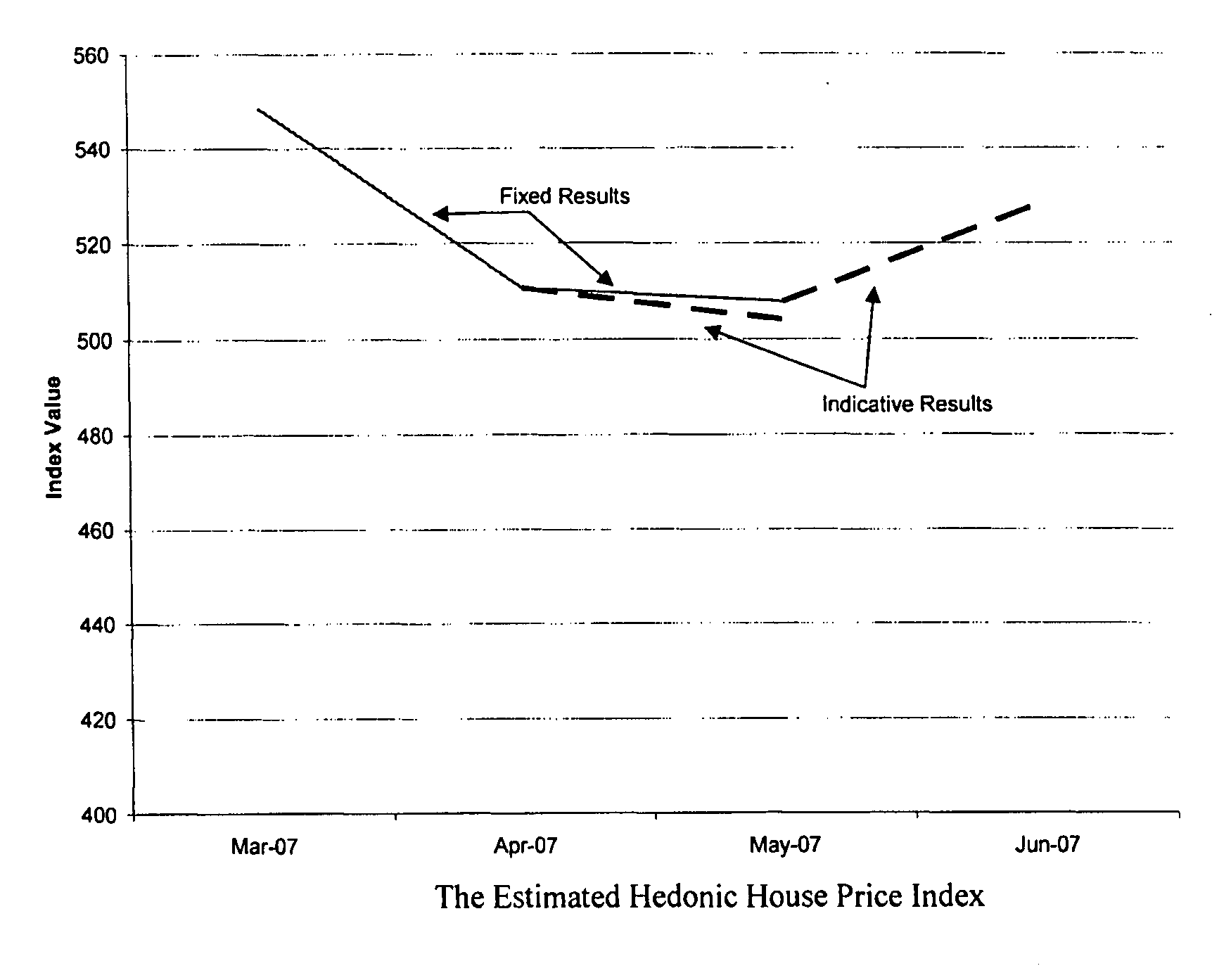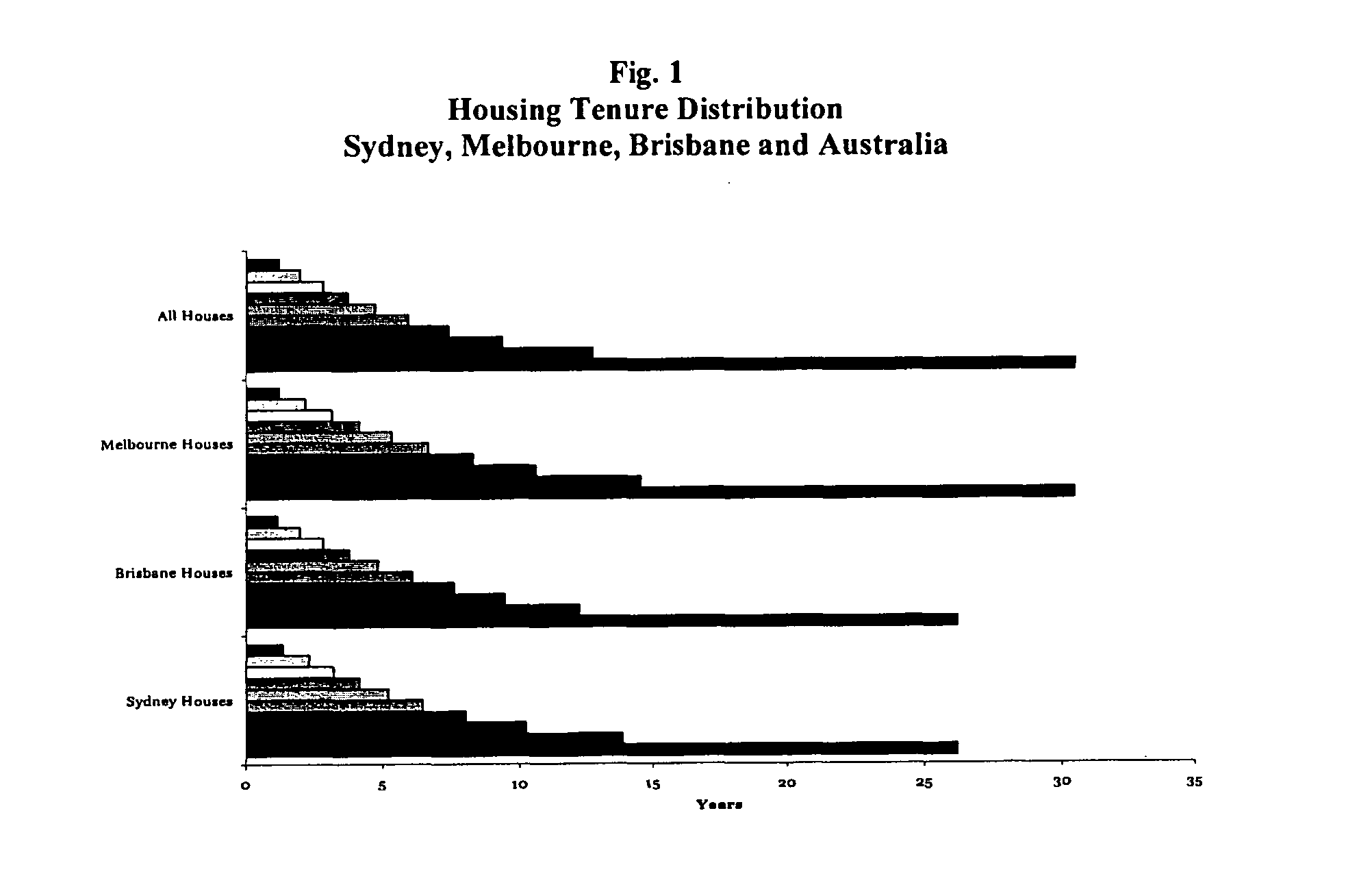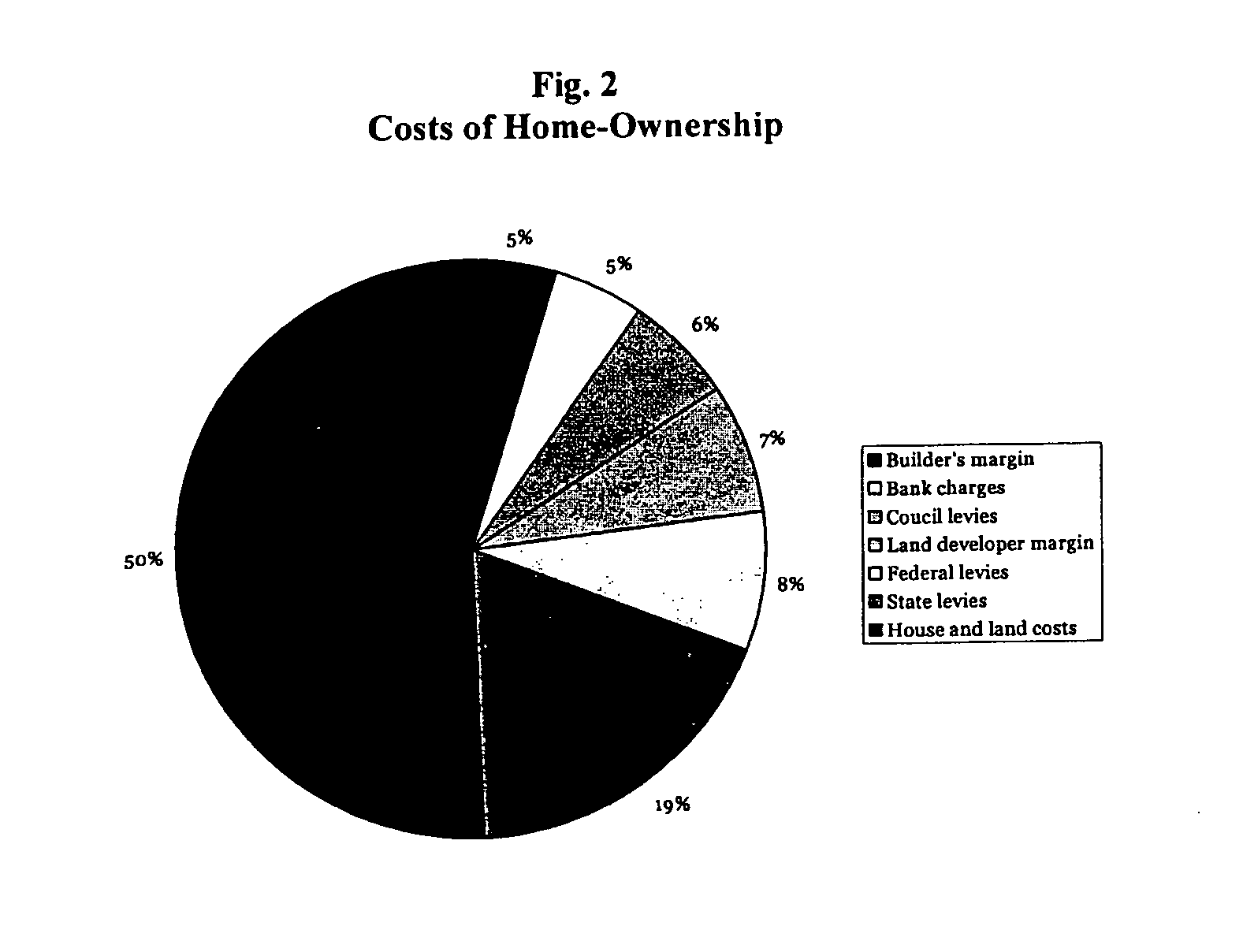Method of, and system for, real estate index generation
a technology of real estate index and index design, applied in the field of computer generated digitally encoded electric waveforms, can solve the problems of poor index design, affecting the development of financial derivatives and futures contracts based on proxies for residential and commercial real estate asset classes, and difficult to accurately measure the risk and return characteristics of time-series changes in residential and commercial real estate asset risk and return characteristics, etc., to achieve the effect of minimising the restriction on coefficient values and transformation functions
- Summary
- Abstract
- Description
- Claims
- Application Information
AI Technical Summary
Benefits of technology
Problems solved by technology
Method used
Image
Examples
Embodiment Construction
Capital Gains Index
[0155]Given hedonic variables X1, . . . , Xn, a double adjacent period hedonic formula, is used, applied to property sales Pi in each triplet of periods (Tk−2,Tk−1,Tk):
logPi=c0(Tk)+∑j=1msj(Tk)Sj+∑j=1ncj(Tk)fj(xj)+λ1(Tk)τ1+λ2(Tk)τ2+ɛk(2.1)
where:[0156]The fj are transformations of the hedonic variables.[0157]The cj are time varying numerical coefficients.[0158]The Sj are dummy variables with Sj=1 if property i is in suburb j.[0159]The sj are time varying numerical coefficients of the suburb dummy variables.[0160]τ1 is a dummy variable with τ1=1 if the sale occurred in period Tk−1 and τ1=0 otherwise.[0161]τ2 is a dummy variable with τ2=1 if the sale occurred in period Tk and τ2=0 otherwise.[0162]εk is the (zero mean) residual error term
[0163]The above hedonic model thus gives the best estimate of the log return on a property, controlling for its most statistically significant, objectively observable price determining attributes.
[0164]The coefficients λ1, λ2 give the ...
PUM
 Login to View More
Login to View More Abstract
Description
Claims
Application Information
 Login to View More
Login to View More - R&D
- Intellectual Property
- Life Sciences
- Materials
- Tech Scout
- Unparalleled Data Quality
- Higher Quality Content
- 60% Fewer Hallucinations
Browse by: Latest US Patents, China's latest patents, Technical Efficacy Thesaurus, Application Domain, Technology Topic, Popular Technical Reports.
© 2025 PatSnap. All rights reserved.Legal|Privacy policy|Modern Slavery Act Transparency Statement|Sitemap|About US| Contact US: help@patsnap.com



